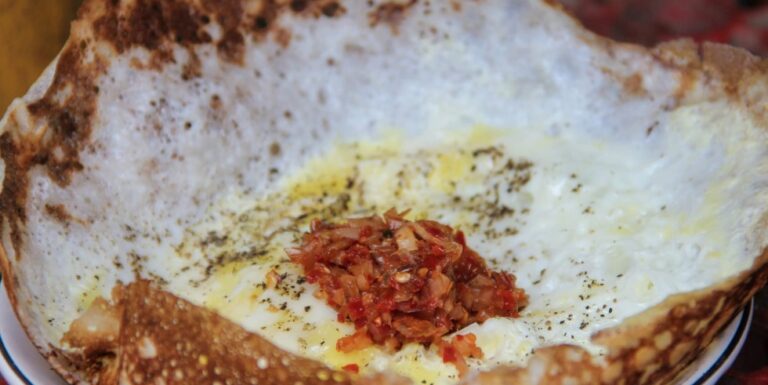Introduction to Sri Lankan street food
Sri Lanka is a country known for its vibrant culture, beautiful beaches, and amazing cuisine. Sri Lankan street food dishes are a must-try for anyone visiting the country. They are tasty, affordable, and offer a great way to experience the local culture. Sri Lankan street food is usually sold from small stalls or food trucks, and it’s commonly eaten for breakfast, lunch, and dinner.
Kottu Roti: the ultimate Sri Lankan food
Kottu Roti is a popular Sri Lankan street food dish that’s hard to miss. It’s made by chopping flatbread, vegetables, eggs, and meat into small pieces and then mixing them together with spices. The mixture is then cooked on a hot griddle, creating a sizzling and delicious sound. Kottu Roti is usually served with a spicy curry sauce and a side of pol sambol.
Short Eats: the perfect snacks for on-the-go
Short Eats are small snacks that are perfect for when you’re on-the-go. They come in different shapes and sizes, and they are usually fried or baked. Popular Short Eats in Sri Lanka include Samosas, which are triangular shaped pastry filled with vegetables or meat, and cutlets, which are small fried balls filled with fish or chicken. They are usually served with a spicy sauce and a side of lime.
Hoppers: the crispy bowl-shaped pancakes
Hoppers are a unique Sri Lankan street food dish that’s made from a fermented rice flour and coconut milk batter. The batter is poured into a small wok-like pan and then cooked over a fire, creating a crispy bowl-shaped pancake. Hoppers are usually served with a side of curry or pol sambol and are commonly eaten for breakfast.
String hoppers: the steamed rice noodle dish
String Hoppers are a steamed rice noodle dish that’s popular in Sri Lanka. They are made by pressing a rice flour dough through a special press to create thin noodles, which are then steamed into a circular shape. String Hoppers are usually served with a side of curry or coconut milk and are commonly eaten for breakfast or dinner.
Pol Sambol: the spicy coconut relish
Pol Sambol is a spicy coconut relish that’s served as a side dish with many Sri Lankan street food dishes. It’s made from freshly grated coconut, red onions, chili flakes, and lime juice. Pol Sambol is a great way to add some heat to your meal, and it’s the perfect accompaniment to any curry or rice dish.

